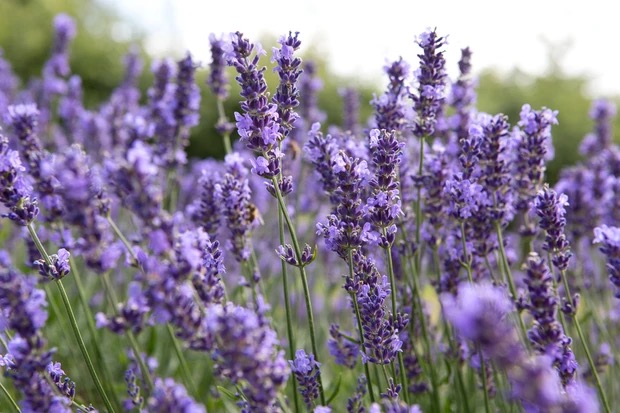14 Nectar-Rich Flowers for Pollinators

With a little planning, you won’t be the only one enjoying the beautiful flowers in your garden, but pollinators will also enjoy them, including butterflies, bees and birds. What are the best nectar-rich flowers for pollinators? Here are our 14 favorites that you can plant (or sow).
Read more below the advertisement
Nectar is a sugary fluid that many plants secrete through their honey glands. This fluid is intended to attract pollinators such as birds, bats, bees, moths, hoverflies and butterflies . In return, many nectar drinkers pollinate the flowers they visit by transferring pollen from plant to plant.
Plants use a variety of methods to attract pollinators, including color, markings, and scent. Bees, for example, prefer purple and blue. Some flowers have markings that resemble landing strips and are only visible in the UV spectrum. This helps guide bees that can see them.
Which plants should not be missing in your garden to help biodiversity? And which animals or insects do they attract? These are our favorite flowers for pollinators, full of nectar!

This plant flowers in winter and spring and is therefore an important source of early nectar for the meadow bumblebee ( Bombus pratorum ) which appears in March. Lungwort is an easy plant and adds colour to a shady spot.

Ideal for people who garden in pots and containers . Blue cushion is compact, colourful and full of nectar. You can also fill the open gaps between tiles or fill the gaps in a sunny wall. They then wave beautifully downwards. They provide colour and nectar in spring and early summer.

This stately perennial bulbous plant has hanging umbels of nectar-rich flowers, so full that you can see the nectar dripping. Bumblebees and honeybees are often attracted to it. Varieties that can be grown are: Nectaroscordum tripedale and Nectaroscordum siculum .
Most catnip species have small purple-blue flowers that pollinators love. It is also not a weak bloomer, because if you cut off the faded flowers it will simply produce new ones. In short, nectar for pollinators all season long.



Cerinthe major is a hardy annual with attractive blue-green foliage and hanging flowers. The cultivar 'Purpurascens' has beautiful dark purple flowers that are loved by bumblebees.

Bee food is often used as green manure. This means that the finely ground leaves are processed into the soil as fertilizer. But if you let it grow, it shows its beautiful lilac flowers that attract masses of bees, hoverflies and butterflies.


Lavender is one of the most reliable plants when it comes to nectar. Make sure it is in well-drained soil and in full sun. The hybrid Lavandula x intermedia has longer flower stems and therefore blooms longer. And pollinators like that.

Bees and larger hoverflies also love the butterfly bush . You can also choose from many colours.
Tip

All species of viper's bugloss are attractive to pollinators, including the giant viper's bugloss ( Echium pininana ) and the smaller native Echium vulgare . The latter should be placed in a sunny spot with well-drained sun.

Wild marjoram ( Origanum vulgare ) is a native plant and will therefore do well in your garden. In the summer months it bears clusters of small, pink flowers that are attractive to bumblebees, butterflies, honeybees and many more pollinators.

The stonecrop ( Hylotelephium telephium or Sedum telephium ) formally belongs to the genus stonecrop and blooms in the autumn. Its large flower heads are full of nectar-rich flowers. Even after flowering, the seed heads look beautiful, especially after a frost.

Like stonecrop, mountain asters are a great source of late nectar and pollen. When the summer flowers are done, they provide pollinators with something to drink until October.

Daucus carota has white, airy umbels that are attractive to a large group of insects. After flowering, the flowers form special seed heads, which remain standing all winter.

Butterflies, hoverflies, bumblebees, bees ... it is amazing how many pollinators are attracted to the sturdy, yellow-green umbel flowers of parsnip. It is also the host plant of the queen butterfly. You can also make delicious dishes from the root.
Tip! In any case, many umbellifers from the vegetable garden are excellent insect attractors, such as anise and fennel. A good reason to start a (small) vegetable garden !
Plants in dry soil produce less nectar than plants in well-watered soil, so stay alert during hot summer weather and keep the watering can handy.





